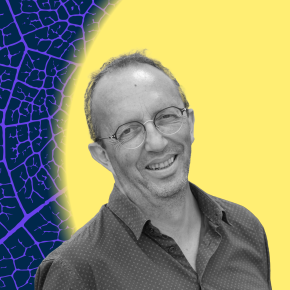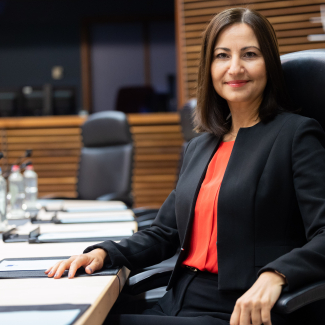
ECHOES - a European cloud for cultural heritage
The European project ECHOES (A European Collaborative Cloud for Cultural Heritage) has funding of €25 million over five years and aims to create a collaborative cloud - a European reference platform for tangible and intangible cultural heritage professionals. Its coordinator, Xavier Rodier, explained the project to us at its launch.
Why does Europe want a dedicated collaborative cloud for cultural heritage?
Xavier Rodier1 : Europe's richly diverse heritage is both tangible (works of art, furniture, architecture, archaeological and geological sites, etc.) and intangible (traditions, languages, know-how, etc.). Currently only 30 to 50% of Europe's major cultural collections have been digitised with many digitisation procedures controlled by non-European third-party companies.
In the light of this, a report by a group of international heritage experts has highlighted the importance of digitising more of our heritage, doing so openly to avoid losing property rights and setting up a collaborative cloud to bring together and share this information. This, then, is the context in which the European Commission has chosen to finance the ECHOES project.
You are the scientific coordinator of the ECHOES (A European Cloud for Heritage OpEn Science) project. What are its objectives?
X. R.: ECHOES is a European collaborative cloud project the CNRS leads in collaboration with the National Research Council of Italy (CNR) and France's Foundation for Heritage Science. The project aims to create and maintain the right digital infrastructure, set up a legal entity to manage it, ensure its long-term future and finally drive the involvement of cultural heritage communities in co-constructing and appropriating this new space.
ECHOES will use an open science approach to make existing digital solutions sustainably available to a genuine network. A particular concerned for the European Commission is to preserve the many tools and databases developed in the framework of projects it finances. The cloud is based on the same knowledge model as these resources so it can be enriched by all the past data and also host data from future projects.
Who is the cloud for?2
X. R.: It's aimed at all cultural heritage professionals - curators, restorers, museologists, archivists, archaeologists, historians, anthropologists and so forth. All of them use data and produce knowledge. The new platform will help them share their data and provide them with innovative digital data processing tools.
The idea is for the cloud to function as a digital environment for sharing and exchange between all these stakeholders. The aim is therefore to facilitate cooperation on creating new objects known as 'digital commons' - digital heritage objects that enable a new form of knowledge production. The space will be a major success if it drives and facilitates the emergence of new pan-European collaborations that otherwise may never have come into being.
Finally, the cultural sector is often lacking in financial resources, staff and sometimes even the right expertise to succeed in its digital transformation. The ECHOES project will thus also support many small museums and other cultural institutions through their own digital transitions.
How will this cloud be constructed?
X. R.: Our first challenge is to create a distributed infrastructure so information can be stored in a variety of formats and large data sets can be linked up. It will be based on international norms and standards to ensure everything accessible via the cloud is interoperable.
The cloud should also promote the creation and acquisition of digital twins of heritage objects. Finally, the heritage communities must appropriate the cloud for it to be a success so this digital ecosystem will actually be developed with and for those communities. Committees made up of experts and end-users will also assess the usefulness and quality of the cloud's tools.
Who are the 51 European partners who make up the consortium that ECHOES is based on?
X. R.: We have set up a consortium of members from heritage, humanities and social sciences research and finally IT backgrounds. Sixteen of the partners lead networks in different sectors and all the members represent over a thousand cultural heritage organisations in Europe. The members will play a crucial role in disseminating our developments and involving communities in work based on the notion of digital commons. The influence of these key partners means ECHOES can cover all the European Union countries and also the United Kingdom.
What can be done now to contribute to the success of this cloud in the long term?
X. R.: It is essential to encourage our ECHOES communities to respond to other European calls for cultural heritage projects. In fact, our project is the basic building block that supports the vast European project on the promotion and preservation of heritage in the digital age. Two calls for projects were launched in 2023 with new calls to be launched in 2024 and 2025 on data, conservation and restoration. The results of the calls will be integrated into the cloud we are currently developing. This vast initiative is a highly important development for research because it spotlights what the humanities and social sciences can contribute and coordinate on the European level.
More broadly, we have been entrusted with an important responsibility because Europe has never previously invested so much in cultural heritage research. Ultimately, the platform will help enhance preservation, conservation and restoration procedures and also our knowledge of tangible and intangible heritage of course.
Notes
- CNRS research engineer and director of the Maison de Sciences de l'Homme Val-de-Loire (CNRS/University of Orléans/University of Tours).
- All stakeholders in cultural heritage interested in this European initiative are invited to contact ECHOES at echoes.contact@services.cnrs.fr.


